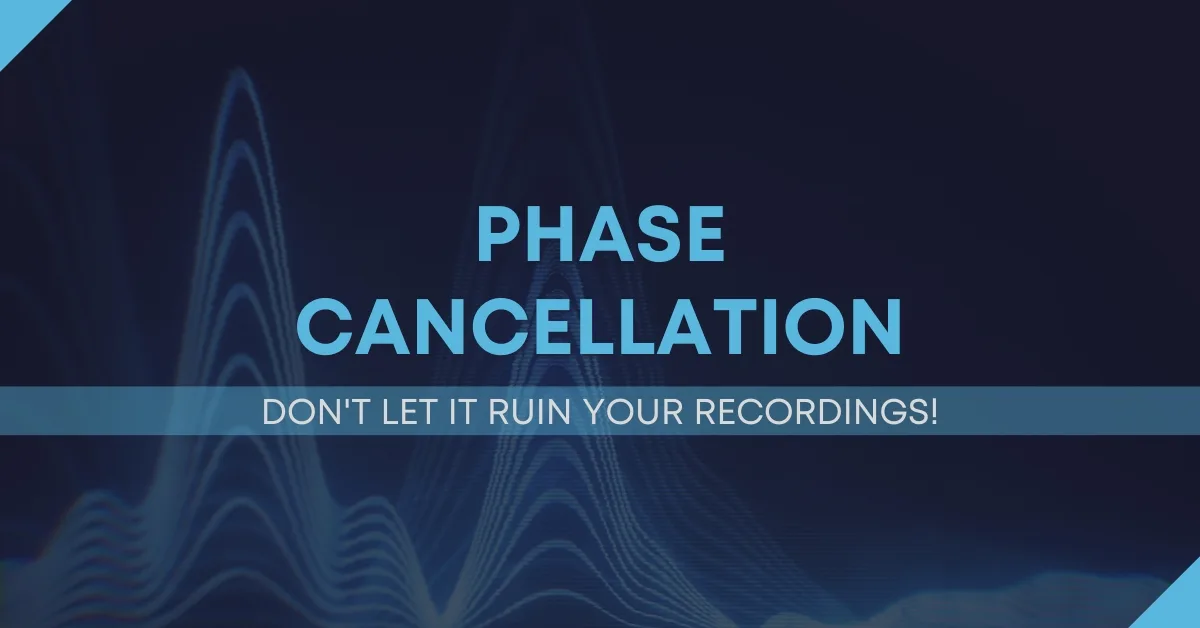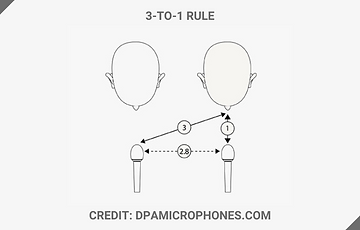
Have you ever recorded a song only to find that the vocals and instruments sound thin and lackluster? There’s a good chance that the issue lies in phase cancellation. Before we dive into how to avoid it, let’s first understand what is phase cancellation.
In simple terms, phase cancellation is the interference that occurs when two sound waves of the same frequency combine. This interference results in a decrease in the overall volume of the sound or no sound at all. When recording music, this can result in a muddled and unclear recording.
While it may seem daunting, there are a number of ways to avoid phase cancellation and ensure clear recordings. In this article, we will explore some of the most effective methods to prevent it. So sit back and prepare yourself for the world of phase and audio waves.

In audio engineering, phase cancellation is the phenomenon that occurs when two waves of different frequencies combine and cancel each other out. This can happen when two sound waves are out of phase with each other, meaning that they are not in sync. When this happens, the waveforms can cancel each other out and create silence or a reduction in volume.
Phase cancellation is an important concept to understand in audio engineering because when it occurs it is usually a bad thing. It means that the recording captured is missing frequencies and has issues with it that will need to be fixed in the mixing phase. The problem is that when something isn't captured correctly from the get-go, it becomes harder to work with later on.
Many factors contribute to phase cancellation. Mic placement, acoustic reflections off the walls or ceiling, and soundproofing measurements all affect this problem. When using multiple microphones to capture a sound source, we have to assume there will be some sort of phase cancellation and must plan accordingly. Phases issues are often always around and as audio engineers, we must minimize their impact.
When understanding what is phase cancellation, we have to understand how it is caused. The most common scenarios where phase cancellation occurs are when you record an instrument with two microphones and when you record a whole band in one room with multiple microphones. In the first scenario, you have to deal with the sound of the instrument reaching the two microphones at different times. This will create some sort of phase cancellation. In the second scenario, you will have different instruments bleeding through into the recording of other instruments' microphones. This will create noticeable phase issues that will be audible during the mixing stage.
So why do these situations create phase? Well, it's very simple. As we mentioned in the prior section, phase cancellation occurs when two waveforms are out of alignment. In both scenarios 1 and 2, multiple microphones are picking up a sound source but at different times which means the waveforms are not aligned. One microphone sound source will be recorded a tidbit earlier than the other and so forth.
Now that you are aware of these two common scenarios, let's discuss how we can avoid or at least reduce the effects of phase cancellation.
Phase cancellation is a common problem when recording audio, but there are a few things you can do to avoid it. Here are 4 pieces of advice to take into consideration to avoid phase cancellation when you are doing your next project. Let's first look at microphone placement.

Microphone placement when using multiple microphones is curcial in reducing phase. You will want to use the 3-to-1 rule when placing mics. This means that the 2nd microphone should be 3 times as far away from the 1st microphone as the 1st microphone is away from the source. Sticking to this rule every time will help minimize any phase issues that may occur.
For bands who like to track live, the best thing to do is find a studio that has multiple rooms to record in. Ideally, you would want booths for the vocalist and guitar amps, a live room for the drum kit, and the bass player can go direct in the control room. This will make sure that the sound is isolated and that the microphones are only picking up their designated sources.
Most channel strip plugins and even some microphones have a phase button that allows you to invert the phase. This is an option that works well to fix phase quickly. If you are unsure if phase is being created, it is best to correct this after the fact with a plugin as opposed to with a microphone.
There are a plethora of phase correction plugins out on the market today. These plugins can do things from auto-phase alignments to allowing the user to make manual adjustments based upon analysis. Below are some of my recommended phase correction plugins.
So how can you tell if phase cancellation has occurred? There are a few tell-tale signs, including a drop in overall volume, a change in the timbre of the recording, and a loss of bass frequencies. If you suspect that your recording has been affected by phase cancellation, try flipping the phase on one of the tracks. If you notice an improvement in the sound then you have a phase issue. That is honestly the easiest way to tell.

Now that you know what is phase cancellation and how to avoid it, how do you fix it if it still occurs? Well, we have already gone over the best ways to do that. If you have an instrument that was recorded with two microphones you can simply flip the phase on one of the tracks using a channel strip plugin. For more intricate fixes, you can use any of my suggested plugins from earlier in this article.
Though these suggestions will likely get you where you need to be, I always recommend just recording it right from the beginning. Just take that extra few minutes to get the microphone placement right and you will save so much time in the editing and mixing stages. Just take my word for that!
Now you know what is phase cancellation, how to avoid it, and how to fix it if it occurs. Though phase cancellation is a common issue that happens to even the best of us, you don't have to let it ruin your recordings. We have many tools, plugins, and techniques out there to deal with this issue and it is honestly something that you need not worry about. Just spend that extra time getting things set up right and your recordings and mix engineer with thank you later!
If you found the information in this article helpful, please consider subscribing to my blog for more audio tips, tricks, and advice. Also, to help fund the blog, consider buying a phase cancellation plugin from one of my links above. Now, go put these tips and techniques into practice in your next recording session!
"Some of the links within this article are affiliate links. These links are from various companies such as Amazon. This means if you click on any of these links and purchase the item or service, I will receive an affiliate commission. This is at no cost to you and the money gets invested back into Audio Sorcerer LLC."